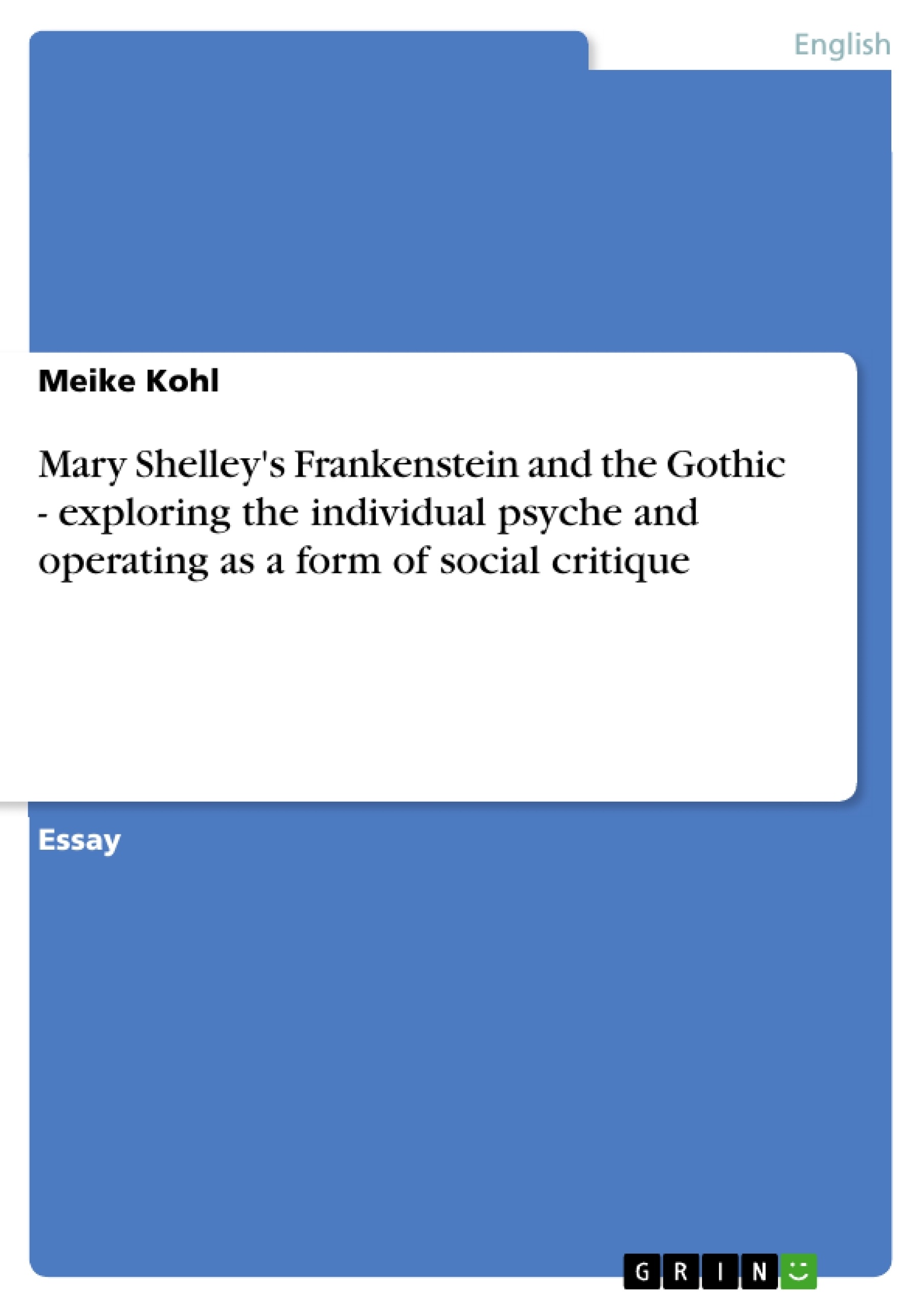The Gothic often employs a first person narrative focussing on the inner lives of its protagonists. The psychological processes revealed reflect political and social issues arising in the late eighteenth and early nineteenth century. The Enlightenment, French, American and Industrial revolution had set in motion a reshuffling of traditional social orders; a new middle class, the bourgeoisie emerged, and with it mercantilism and rationalism. The Gothic can be seen as a reaction to overtly rational thinking, exposing the hidden fears of that time, and criticising the new models of society. The core text used as a representative of the genre Gothic is Mary Shelley’s Frankenstein. However, Frankenstein is not only a Gothic novel, but is closely connected to Romantic thoughts and ideas. Vice versa, some of the tropes of the Gothic novel can also be found in Romantic literature. Frankenstein is intertextually connected with Wordsworth´s and Coleridge’s Lyrical Ballads through references to Coleridge’s ‘Rime of the Ancient Mariner’ and Wordsworth´s ‘Tintern Abbey’. Romantic poetry focuses on the individual, too. Although the form of novel and poetry inevitably differs, and thus also the extent to which a character or issue is presented, a lot of similarities can be found which stand for a discourse typical of that epoch. A prerequisite for the exploration of the individual mind is a narrative exposing the processes of the protagonist’s mind. The suitable narrative form is thus the first person narrative employed in Mary Shelley’s Frankenstein, as well as in some of the Lyrical Ballads. In a time of political and social upheaval very few things appear stable, and neither does the individual mind. Cultural and individual change is paralleling each other.
Inhaltsverzeichnis (Table of Contents)
- Mary Shelley's Frankenstein and the Gothic – exploring the individual psyche and operating as a form of social critique
- The Gothic and the Individual
- Wordsworth's 'Lines written a few miles above Tintern Abbey' and the changing of a personality
- Frankenstein: Multiple Narrators, Multiple Perspectives
- The Ideal of Domestic Happiness and Its Failure
- Victor Frankenstein and the Search for Identity
Zielsetzung und Themenschwerpunkte (Objectives and Key Themes)
This text examines the individual psyche and its representation in Gothic literature, particularly in Mary Shelley's *Frankenstein*. It explores how the Gothic genre operates as a form of social critique, reflecting the anxieties and social changes of the late eighteenth and early nineteenth centuries. The text also draws connections between Gothic and Romantic literature, highlighting the shared themes of individualism and the exploration of the self.- The influence of the Enlightenment, French Revolution, and Industrial Revolution on social and political structures
- The role of the Gothic genre in challenging Enlightenment rationalism and exposing hidden fears
- The use of first-person narration to explore the inner lives of protagonists and their psychological processes
- The importance of family and domesticity in shaping individual identity and happiness
- The complexities of identity and self-discovery in a rapidly changing world
Zusammenfassung der Kapitel (Chapter Summaries)
This chapter examines the use of first-person narration in Gothic literature, focusing on Mary Shelley's *Frankenstein* as a representative example. The chapter argues that the Gothic genre often employs first-person narration to delve into the psychological processes of its protagonists, reflecting the anxieties and social changes of the time. This chapter analyzes Wordsworth's poem "Lines written a few miles above Tintern Abbey" as an example of how first-person narration can be used to explore the changing self over time. It highlights the role of nature and interpersonal relationships in shaping the narrator's identity and perspective. This chapter delves into the complexities of narrative structure in *Frankenstein*, exploring the multiple layers of narration and the perspectives of different characters. It examines how the novel's frame structure with its multiple narrators serves to emphasize the psychic processes of individuals in the early 19th century, struggling with alienation from themselves and society. This chapter discusses the central theme of domestic happiness in *Frankenstein*, exploring the longing for a stable and ideal family environment and the ways in which it fails to provide the security and fulfillment sought by its characters. The chapter also considers how the ideal of a bourgeois family emerges as a response to the instability of the wider world. This chapter focuses on Victor Frankenstein's personal journey, exploring his desire for knowledge, his ambition to create life, and the consequences of his actions. It analyzes Victor's relationship with his family and the limitations of a traditional family structure in a rapidly changing society.Schlüsselwörter (Keywords)
The primary keywords of this text are: Gothic literature, *Frankenstein*, Mary Shelley, first-person narration, individual psyche, social critique, Enlightenment, Romanticism, family, domesticity, identity, self-discovery, social change.- Arbeit zitieren
- Meike Kohl (Autor:in), 2006, Mary Shelley's Frankenstein and the Gothic - exploring the individual psyche and operating as a form of social critique, München, GRIN Verlag, https://www.grin.com/document/117646



